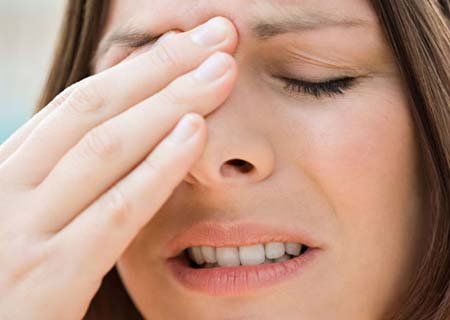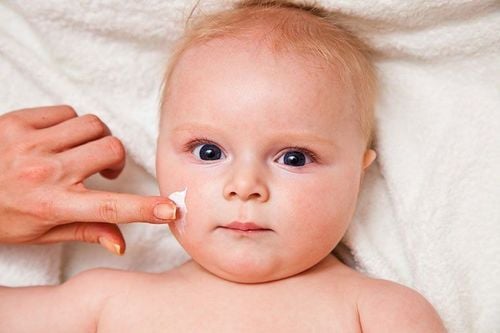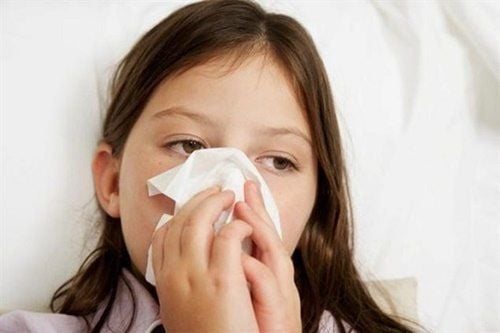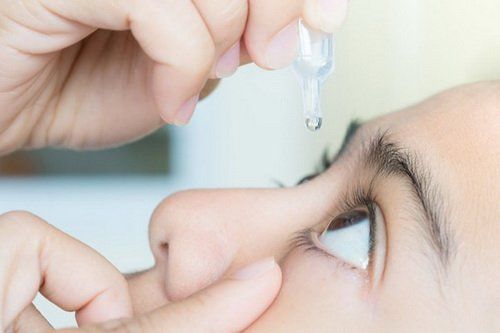This is an automatically translated article.
For patients with allergic rhinitis, prompt and effective treatment of unpleasant symptoms may be of utmost importance. There are many methods to treat allergic rhinitis, in which the simplest and most common way to treat allergic rhinitis at home is using 0.9% physiological saline. However, not everyone knows the use and usage of this treatment method.
1. What is allergic rhinitis?
Allergic rhinitis occurs when the lining of the nose is irritated to the point of swelling but not as with other forms of rhinitis. The causative agents of allergic rhinitis include cigarette smoke, dust, pollen, animal dander...
Allergic rhinitis is not treatable but does not cause severe symptoms. However, if the symptoms are not well controlled, the disease will persist, recur many times and become chronic. At that time, the symptoms are not only uncomfortable, but also have the risk of severely impairing the respiratory system. As a result, the patient's quality of life is also affected.
2. How does physiological saline treat allergic rhinitis?
Using physiological saline is one of the most effective methods of eliminating symptoms of allergic rhinitis today. Physiological saline has the ability to wash allergens out of the nasal passages. Saline can be used alone for patients with mild symptoms or before other medicines for allergic rhinitis, this is to clean the nasal mucosa, thereby increasing the effect of anti-inflammatory drugs. allergic nose. In addition, the most uncomfortable and common symptoms of allergic rhinitis are nasal itching and congestion.
0.9% NaCl physiological saline will help quickly remove mucus - the main cause of nasal congestion. At the same time, the antiseptic properties in salt water will ease the symptoms of inflammation. Rinsing the nose with physiological saline 2-3 times a day can soothe the respiratory mucosa and assist in enhancing fluid drainage. This method has the ability to significantly improve symptoms of nasal congestion, runny nose, and itchy nose.
3. How to cure allergic rhinitis with salt water
Most people still practice using saline according to experience and do not know how to wash their nose with physiological saline properly. The following is the complete sequence of steps for rinsing the nose with saline:
Use a jar of garlic bulbs to store physiological saline, can be replaced with other types of bottles such as nebulizer spray... Tilt your head a little. angle 45 degrees towards the basin or sink, then using a spray bottle, spray salt water into the nose to let the salt water flow from one nostril to the other and into the correct position of the basin or basin. Avoid tilting your head back, as it will cause salt water to flow back into your nose. Insert the nozzle into the side of the nose and open the mouth, and slowly spray physiological saline into the nasal cavity. At this time, it is necessary to breathe through the mouth, not through the nose. Occasionally, salt water may run down the throat but this is nothing to worry about. Blow your nose gently to check that the fluid has completely removed the inside of the nose. If not completely clean, perform nasal irrigation again with physiological saline.
4. Note when treating allergic rhinitis with salt water at home
You need to be careful when using physiological saline for allergic rhinitis according to the doctor's following advice:
Should choose to use quality physiological saline, sold at reputable large drugstores Use warm salt water and ensure safety and hygiene Physiological saline only works to support the treatment of mild respiratory diseases. If the disease is severe, the patient needs to go to the hospital for examination and appropriate treatment. Should clean the nose regularly to push the dirt out, feel comfortable, open and contribute to the prevention of inflammation. Eating scientifically and with enough nutrition to strengthen the body's resistance Limit eating foods containing irritants such as tobacco, alcohol or allergens... Do not stay in rooms that are too cold or too hot or drink ice cold water... Avoid exposure to environments that are polluted and have many factors that cause respiratory irritation such as dust, animal dander, and pollen. flowers... Always keep the body in a relaxed, optimistic and avoid excessive stress... Regularly keep in touch and discuss with the doctor to discuss the changes of the disease, from there timely response measures can be taken if necessary. In addition, nasal sprays can also be used to treat allergic rhinitis. Supporting the treatment of allergic rhinitis with physiological saline is a simple and inexpensive method and also accelerates the speed of specific treatment. However, if the patient shows severe symptoms or the disease lasts more than 2 weeks without any signs of improvement, it is necessary to contact the doctor for timely examination and treatment.
Please dial HOTLINE for more information or register for an appointment HERE. Download MyVinmec app to make appointments faster and to manage your bookings easily.













